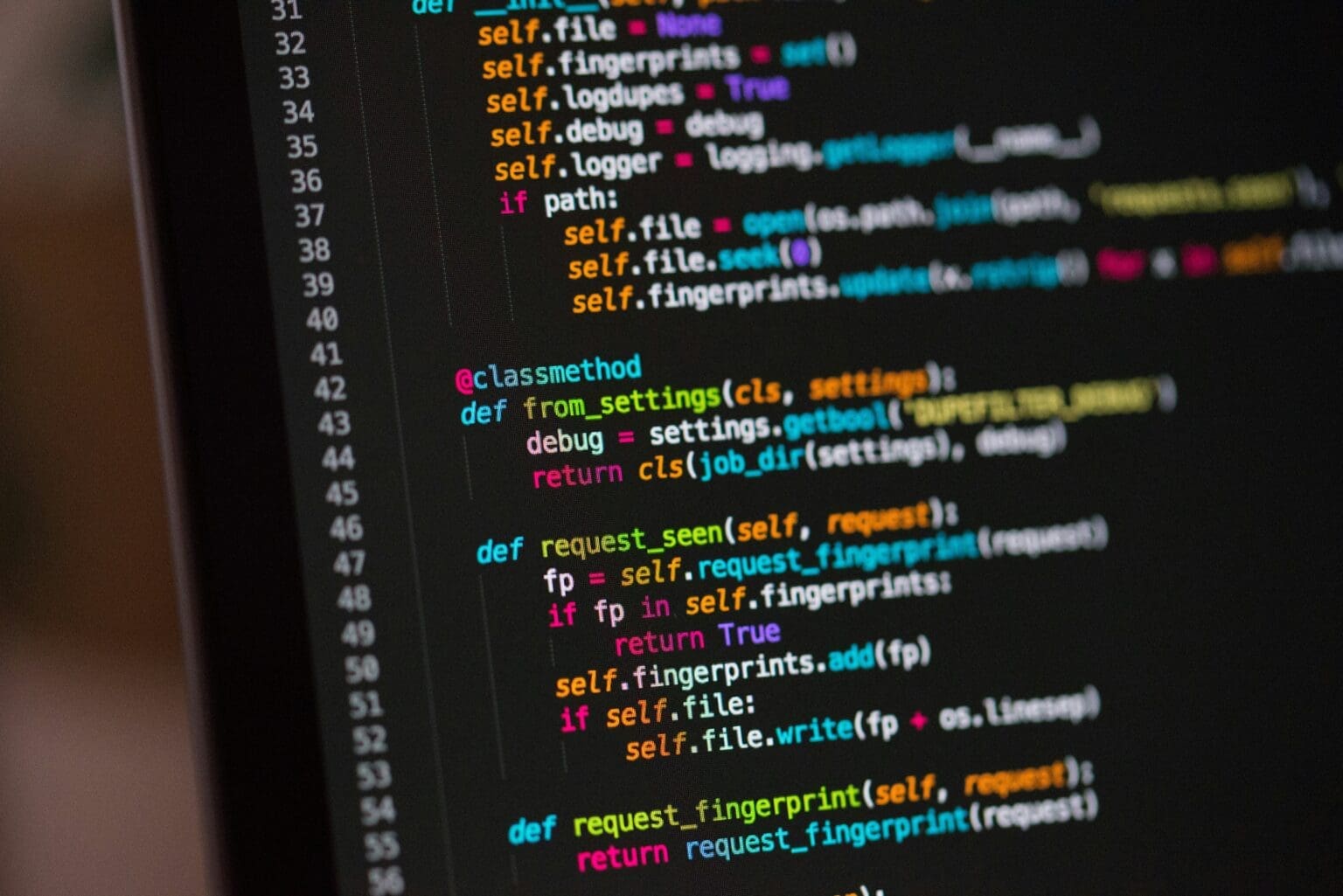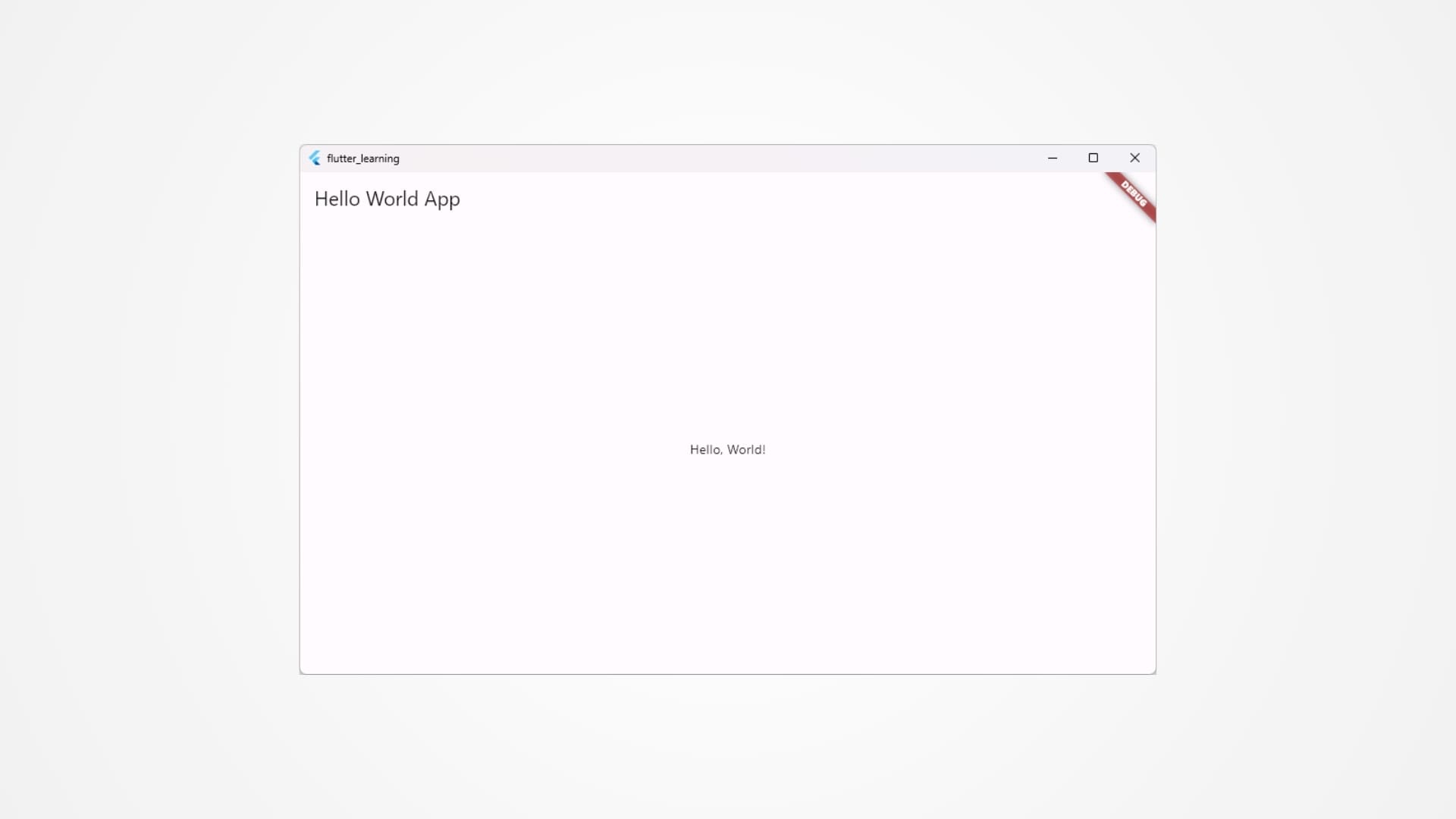Python has become one of the most popular and versatile programming languages due to its simplicity, readability, and wide range of applications. Whether you’re interested in web development, data science, machine learning, automation, or scripting, Python is an excellent language to start with. However, before you can begin writing Python code, it’s essential to set up a proper Python development environment. This ensures that your workflow is efficient, error-free, and scalable as your projects grow.
Setting up a Python development environment involves installing Python itself, configuring an Integrated Development Environment (IDE) or text editor, and ensuring that your system is capable of running Python scripts efficiently. While this process may seem daunting for beginners, it’s quite straightforward with the right guidance.
In this article, we’ll guide you through the process of setting up your Python development environment. We’ll start with installing Python on your system, and then explore some of the best IDEs and code editors available for Python development. By the end of this article, you’ll have all the tools you need to begin writing Python code smoothly and efficiently.
Installing Python
The first step in setting up your Python development environment is installing Python itself. Python comes in two major versions: Python 2 and Python 3. While Python 2 was widely used in the past, it has officially reached its end of life, and Python 3 is now the standard. In this guide, we will focus on Python 3, which is the version recommended for all new projects.
Step 1: Downloading Python
To install Python, you first need to download the installer from the official Python website. Follow these steps:
- Go to the official Python website at python.org.
- Navigate to the Downloads section. The website will automatically detect your operating system and recommend the appropriate installer.
- Click the Download Python 3.x.x button (where
x.xis the latest version of Python). This will download the installer to your computer.
Step 2: Installing Python on Windows
Once you’ve downloaded the installer for Windows, follow these steps to complete the installation:
- Run the Installer: Double-click the downloaded
.exefile to launch the Python installer. - Add Python to PATH: Before clicking Install Now, check the box that says Add Python 3.x to PATH. This ensures that Python can be accessed from the command line.
- Choose Install Options: Select Install Now to install Python with default settings, or choose Customize Installation if you want to specify installation directories or install optional components.
- Verify Installation: Once installation is complete, open a command prompt (press
Windows + R, typecmd, and hit Enter) and type the following command:
python --versionIf Python is installed correctly, it will display the version number (e.g., Python 3.10.2).
Step 3: Installing Python on macOS
For macOS users, Python 2.x typically comes pre-installed. However, you’ll need to install Python 3 manually. Follow these steps:
- Download the Installer: As with Windows, go to python.org and download the latest version of Python 3.
- Run the Installer: Open the
.pkgfile you downloaded and follow the on-screen instructions to install Python. - Verify Installation: Once the installation is complete, open a terminal (press
Cmd + Space, typeterminal, and hit Enter), and type the following command:
python3 --versionThis should display the Python version you installed, indicating that the installation was successful.
Step 4: Installing Python on Linux
Most Linux distributions come with Python pre-installed, but it’s often an older version. To install the latest version of Python, follow these steps:
1. Update Package Manager: First, update your package manager:
sudo apt update2. Install Python: Use the following command to install Python 3:
sudo apt install python33. Verify Installation: After installation, you can check the Python version by typing:
python3 --versionThis will display the installed Python version.
Setting Up pip – Python’s Package Manager
Once Python is installed, the next step is setting up pip, Python’s package manager. pip is used to install external libraries and modules that you might need for your Python projects, such as requests for making HTTP requests or pandas for data manipulation.
In most cases, pip is installed automatically when you install Python, but it’s a good idea to verify that it’s working properly.
Checking for pip
To check if pip is installed and accessible from your command line, run the following command:
pip --versionIf pip is installed correctly, this command will display the version of pip installed on your system. If not, follow the instructions below to install pip.
Installing pip (if necessary)
If pip isn’t installed, you can install it manually using the following steps:
1. Download get-pip.py: Download the get-pip.py script from the official Python website:
curl https://bootstrap.pypa.io/get-pip.py -o get-pip.py2. Run the Script: Use Python to run the script:
python3 get-pip.py3. Verify Installation: Once installed, verify that pip is working by typing:
pip --versionUsing pip to Install Packages
After pip is set up, you can use it to install any Python package from the Python Package Index (PyPI). For example, to install the popular requests library, you would use:
pip install requestsThis command downloads and installs the requests library, making it available for use in your Python scripts.
Setting Up a Virtual Environment
When working on Python projects, especially larger or more complex ones, it’s a good idea to set up a virtual environment. A virtual environment is an isolated environment that allows you to install packages and dependencies specific to a particular project without affecting other projects or your global Python installation. This is especially useful when working on multiple projects that require different versions of the same library.
Creating a Virtual Environment
To create a virtual environment, you can use the venv module that comes with Python. Follow these steps:
1. Navigate to Your Project Directory: Open a terminal and navigate to the directory where you want to create your project.
2. Create the Virtual Environment: Run the following command to create a virtual environment:
python3 -m venv myenvThis creates a new directory named myenv that contains the isolated Python environment.
3. Activate the Virtual Environment:
- On Windows, use:
myenv\Scripts\activate- On macOS and Linux, use:
source myenv/bin/activateOnce activated, your terminal or command prompt should display the name of the virtual environment. You can now install libraries and packages specific to this environment without affecting other projects.
Deactivating the Virtual Environment
When you’re done working on your project, you can deactivate the virtual environment by running:
deactivateThis returns your terminal to the global Python environment.
Choosing the Right Python IDE or Code Editor
Once Python is installed and configured, the next step is choosing an Integrated Development Environment (IDE) or code editor to write your Python code. While you can write Python scripts in any text editor, a good IDE will provide features like syntax highlighting, debugging tools, code completion, and more, making development faster and more efficient.
Here are some of the most popular IDEs and code editors for Python development:
1. Visual Studio Code (VS Code)
Visual Studio Code is one of the most popular code editors for Python development. It is free, open-source, and lightweight, with a powerful set of features that can be extended with various plugins. The Python extension for VS Code provides syntax highlighting, IntelliSense, code completion, debugging, and integration with Jupyter notebooks.
- Key Features:
- Cross-platform (available on Windows, macOS, and Linux)
- Integrated terminal for running Python scripts
- Support for virtual environments
- Extensive marketplace of extensions
2. PyCharm
PyCharm is a full-featured Python IDE developed by JetBrains, specifically designed for Python development. It comes in two versions: a free Community edition and a paid Professional edition, with advanced features like web development support and database tools.
- Key Features:
- Powerful code editor with intelligent code completion
- Built-in debugging and testing tools
- Support for Django and other web frameworks (Professional edition)
- Integrated version control (Git, Mercurial, etc.)
3. Sublime Text
Sublime Text is a fast and lightweight text editor that’s highly customizable. While not a full-fledged IDE, it’s a popular choice for Python development when combined with the right plugins. Sublime Text is known for its speed and simplicity, making it an excellent choice for smaller projects or developers who prefer a minimalistic setup.
- Key Features:
- Fast performance
- Customizable with packages and plugins
- Cross-platform support
- Powerful search and multi-selection capabilities
4. Jupyter Notebook
Jupyter Notebook is a web-based IDE primarily used in data science and machine learning. It allows you to write and execute Python code in individual cells, which makes it perfect for exploratory coding, data analysis, and interactive visualization.
- Key Features:
- Interactive code execution and visualization
- Excellent for data science and machine learning workflows
- Supports Markdown for rich text annotations
- Integration with popular data science libraries (e.g., NumPy, Pandas, Matplotlib)
Configuring Your IDE for Python Development
Once you’ve installed Python and selected an IDE or text editor, the next crucial step is configuring it to maximize productivity and efficiency. Most modern IDEs come with built-in or easily installable support for Python, offering features like code completion, debugging tools, and integration with version control systems like Git. Proper configuration of your IDE will significantly enhance your coding experience by automating repetitive tasks, providing real-time feedback on code quality, and streamlining your workflow.
In this section, we’ll go over how to configure popular Python IDEs, including Visual Studio Code (VS Code), PyCharm, Sublime Text, and Jupyter Notebook. By the end, you’ll be equipped to customize your development environment according to your specific needs.
Configuring Visual Studio Code for Python
Visual Studio Code (VS Code) is a highly customizable and lightweight code editor that’s rapidly become one of the most popular tools for Python developers. It offers numerous extensions to support Python development, making it versatile and easy to use.
Step 1: Install the Python Extension for VS Code
To start coding in Python with VS Code, you’ll need to install the Python extension. This extension provides essential features like IntelliSense (code completion), linting (code quality checks), debugging, and more.
- Open VS Code.
- Click on the Extensions icon on the left sidebar or press
Ctrl+Shift+X(Windows/Linux) orCmd+Shift+X(macOS). - In the search bar, type “Python” and select the extension created by Microsoft.
- Click Install.
Once installed, VS Code will automatically detect Python files and provide syntax highlighting and other features specific to Python.
Step 2: Selecting the Python Interpreter
VS Code allows you to choose which version of Python to use for your project. This is particularly important if you have multiple Python versions installed on your machine or if you’re using virtual environments.
- Open the Command Palette by pressing
Ctrl+Shift+P(Windows/Linux) orCmd+Shift+P(macOS). - Type Python: Select Interpreter and choose it from the list.
- VS Code will show you all the Python installations on your system. Choose the appropriate interpreter for your project (e.g., Python 3.x.x or a specific virtual environment).
Step 3: Configuring Linting and Code Formatting
Linting tools help you write cleaner code by identifying potential errors, bugs, or deviations from coding standards. VS Code supports multiple Python linters, including Pylint, Flake8, and Black for code formatting.
- Open the Command Palette and search for Python: Enable Linting.
- Choose your preferred linter (e.g., Pylint or Flake8). If it’s not installed, VS Code will prompt you to install it.
- To enable code formatting, you can install the Black formatter by running:
pip install blackOnce installed, go to Settings and enable Format On Save to automatically format your code when you save the file.
Step 4: Using the Integrated Terminal
VS Code’s Integrated Terminal allows you to run Python scripts and manage virtual environments directly from the editor without switching to an external terminal. You can open the terminal by pressing Ctrl+ (Windows/Linux) or Cmd+ (macOS), and use Python commands like:
python your_script.pyThis setup streamlines your workflow by allowing you to manage and test your code from a single interface.
Configuring PyCharm for Python Development
PyCharm is a full-fledged Python IDE developed by JetBrains, offering both a free Community edition and a paid Professional edition with additional features. It’s designed specifically for Python development, providing a highly polished experience with built-in tools for testing, debugging, and managing virtual environments.
Step 1: Setting Up a Python Interpreter
When you create a new project in PyCharm, it will prompt you to configure a Python interpreter. Here’s how to set it up:
- Open PyCharm and create a new project by selecting New Project.
- In the Project Interpreter section, click the Add Interpreter button.
- You can either select an existing Python interpreter installed on your machine or create a new virtual environment.
- If you’re using a virtual environment, PyCharm will automatically detect it and configure the project accordingly.
Step 2: Enabling Linting and Code Inspection
PyCharm provides built-in support for linting and code inspections, helping you maintain code quality by identifying potential errors as you type.
- Navigate to File > Settings > Editor > Inspections.
- In the Python section, enable the inspections you want, such as PEP8 coding style, unused imports, or unresolved references.
- PyCharm will automatically highlight any issues in your code, making it easier to follow best practices and avoid common mistakes.
Step 3: Debugging in PyCharm
PyCharm’s debugging tool is one of its standout features. It allows you to set breakpoints, step through your code, and inspect variables as your program executes.
- To set a breakpoint, simply click in the left margin next to the line of code where you want the execution to pause.
- Run your script in Debug mode by clicking the bug icon (
Shift + F9). - When execution pauses at a breakpoint, you can inspect variables, step through your code, and see real-time output in the Debug tool window.
Step 4: Managing Virtual Environments in PyCharm
PyCharm provides built-in support for managing Python virtual environments, making it easy to isolate project dependencies. When creating a new project, PyCharm will prompt you to either use an existing interpreter or create a new virtual environment. If you need to set up a virtual environment manually, follow these steps:
- Go to File > Settings > Project > Python Interpreter.
- Click the gear icon next to the current interpreter and select Add.
- Choose Virtualenv Environment and select a base interpreter (e.g., Python 3.x.x).
- PyCharm will create the virtual environment in your project directory and automatically activate it.
Configuring Sublime Text for Python Development
Sublime Text is a popular code editor known for its speed and simplicity. While it’s not a full IDE, Sublime Text can be extended with plugins to support Python development. It’s a great choice for developers who prefer a lightweight setup.
Step 1: Installing Package Control
The first step in configuring Sublime Text for Python development is to install Package Control, which allows you to install plugins and manage packages for additional functionality.
- Open Sublime Text and press
Ctrl + Shift + P(Windows/Linux) orCmd + Shift + P(macOS) to open the Command Palette. - Type Install Package Control and press Enter.
- Once installed, you can install various Python-related packages by opening the Command Palette again and typing Package Control: Install Package.
Step 2: Installing Python-Specific Plugins
With Package Control installed, you can now add Python plugins to enhance your coding experience.
- Anaconda: This plugin adds code completion, linting, and a variety of Python-specific tools to Sublime Text.
- Open the Command Palette and type Package Control: Install Package.
- Search for Anaconda and install it.
- After installation, Anaconda will provide real-time code linting, autocompletion, and even basic debugging functionality.
- Black: To automatically format your Python code, you can install Black as a Sublime Text plugin. This will help maintain a consistent code style across your projects.
Step 3: Running Python Code in Sublime Text
Sublime Text doesn’t come with a built-in terminal, but you can run Python code directly from the editor using the Build System:
- Open the Python file you want to run.
- Press
Ctrl + B(Windows/Linux) orCmd + B(macOS) to run the script. - The output will appear at the bottom of the editor window.
While Sublime Text doesn’t offer the full feature set of an IDE, it’s an excellent choice for developers who prefer a minimalist, fast code editor.
Configuring Jupyter Notebook for Python Development
Jupyter Notebook is widely used in data science, machine learning, and scientific computing due to its interactive nature. It allows you to write Python code, execute it in cells, and visualize the results directly within your notebook.
Step 1: Installing Jupyter Notebook
Jupyter Notebook can be installed via pip if it’s not already included in your Python setup:
pip install notebookOnce installed, you can start Jupyter Notebook by running the following command in your terminal:
jupyter notebookThis will launch Jupyter in your default web browser, where you can create and manage notebooks.
Step 2: Using Jupyter Notebooks for Data Science
Jupyter’s interactive environment is perfect for data science workflows. You can install libraries like NumPy, Pandas, and Matplotlib for data manipulation and visualization. Here’s how you can use Jupyter for a typical data science workflow:
1. Install Data Science Libraries:
pip install numpy pandas matplotlib2. Import and Use Libraries in Jupyter:
import numpy as np
import pandas as pd
import matplotlib.pyplot as plt
# Sample DataFrame in Pandas
df = pd.DataFrame({'A': [1, 2, 3], 'B': [4, 5, 6]})
print(df)Jupyter is excellent for experimenting with data, running complex calculations, and visualizing the results in real time, making it the go-to tool for data scientists and machine learning engineers.
Version Control Integration with Git
Version control is a critical part of any development workflow, and most modern IDEs come with built-in support for Git. Version control allows you to track changes to your code, collaborate with other developers, and roll back to previous versions if necessary.
Setting Up Git in VS Code
VS Code provides native support for Git. You can manage Git repositories, commit changes, and push/pull to remote repositories without leaving the editor.
1. Initialize a Git Repository: In VS Code, open the terminal and run:
git init2. Stage and Commit Changes: Use the Source Control icon on the sidebar to stage and commit changes.
3. Push to a Remote Repository: Use the terminal to push changes to a remote repository:
git remote add origin <repository-url>
git push -u origin masterManaging Dependencies and Organizing Python Projects
As you continue to build more complex Python projects, managing dependencies and organizing your project structure becomes increasingly important. Python projects often rely on external libraries and packages to perform specific tasks, such as data analysis with Pandas or web development with Flask or Django. Managing these dependencies efficiently ensures that your project runs smoothly on different systems and environments, and it also helps other developers collaborate with you more easily.
In this final section, we’ll cover how to manage project dependencies using tools like virtual environments and pip. We’ll also discuss best practices for organizing your Python projects, ensuring scalability and maintainability over time.
Managing Python Dependencies
Managing dependencies is crucial in Python development. As your project grows, it may rely on a variety of external libraries and tools, which need to be tracked and properly installed to avoid version conflicts and maintain compatibility across environments.
Using requirements.txt
A common practice in Python development is to use a requirements.txt file to list all the dependencies needed for your project. This file can be generated automatically from your virtual environment and can be shared with other developers to ensure everyone has the same setup.
Here’s how to create and use a requirements.txt file:
1. Install Your Dependencies: While working inside a virtual environment, install all the packages your project needs using pip:
pip install flask pandas numpy2. Generate requirements.txt: Once all the dependencies are installed, generate a requirements.txt file by running:
pip freeze > requirements.txtThis command outputs a list of all the installed packages and their versions into the requirements.txt file.
3. Installing Dependencies from requirements.txt: When setting up the project on another machine or environment, you can install all the required dependencies using:
pip install -r requirements.txtThis approach ensures that the project has consistent dependencies across different environments and prevents issues caused by version mismatches.
Using Pipenv for Dependency Management
Pipenv is an alternative tool for managing Python project dependencies and virtual environments. It combines the functionality of pip and virtualenv into a single tool, making dependency management easier and more robust.
Installing and Using Pipenv
1. Install Pipenv: First, you need to install Pipenv using pip:
pip install pipenv2. Creating a Virtual Environment with Pipenv: Navigate to your project directory and use Pipenv to create a virtual environment and install dependencies:
pipenv install flaskPipenv will create a Pipfile and a Pipfile.lock, which replace the traditional requirements.txt file. The Pipfile lists the project’s dependencies, while Pipfile.lock ensures that exact versions of packages are installed.
3. Activating the Virtual Environment: Use the following command to activate the virtual environment created by Pipenv:
pipenv shell4. Installing Dependencies from Pipfile: On another system, you can install the project’s dependencies by running:
pipenv installPipenv is a great alternative to pip and requirements.txt because it simplifies the process of creating and managing isolated environments and dependencies.
Best Practices for Organizing Python Projects
Organizing your project files and directories effectively is key to maintaining clean, scalable, and easily navigable codebases. Following best practices for project structure will help keep your code modular, making it easier to test, extend, and collaborate with other developers.
Standard Python Project Structure
Here is a standard folder structure for a Python project:
my_project/
│
├── my_project/
│ ├── __init__.py
│ ├── main.py
│ ├── module1.py
│ ├── module2.py
│
├── tests/
│ ├── __init__.py
│ ├── test_module1.py
│ ├── test_module2.py
│
├── .gitignore
├── Pipfile or requirements.txt
├── README.md
├── setup.pyLet’s break down the key components of this structure:
my_project/: This directory contains all your project’s code. Each Python module (module1.py,module2.py, etc.) should contain logically grouped functions, classes, and other code. The__init__.pyfile marks this directory as a package, enabling Python to treat it as a module that can be imported.tests/: This folder contains all your unit tests. Each test file corresponds to a module in your project (e.g.,test_module1.pytests the code inmodule1.py). Writing tests ensures that your code works as expected and allows you to make changes confidently..gitignore: This file specifies which files and directories Git should ignore when tracking changes in your project. Common entries include__pycache__/, virtual environment directories, and sensitive data like configuration files.Pipfileorrequirements.txt: These files manage the project’s dependencies. As discussed earlier, they list all the libraries required for your project, ensuring that others can replicate your development environment.README.md: TheREADMEfile provides an overview of the project. It typically includes instructions on how to install dependencies, run the project, and contribute to the codebase. A well-written README is essential for collaboration, especially in open-source projects.setup.py: If you plan to distribute your project as a package, thesetup.pyfile is used to define the package metadata (such as the name, version, and dependencies). This file is crucial for publishing your project to the Python Package Index (PyPI) or installing it viapip.
Using Modules and Packages
As your project grows, breaking down your code into smaller, reusable modules is important for keeping it manageable. A module is simply a Python file that contains related functions and classes, while a package is a directory containing multiple modules, marked by an __init__.py file.
Here’s an example of using modules and packages in your project:
# module1.py
def greet(name):
return f"Hello, {name}!"# module2.py
def farewell(name):
return f"Goodbye, {name}!"Now, in your main script (e.g., main.py), you can import and use these functions:
from module1 import greet
from module2 import farewell
print(greet("Alice"))
print(farewell("Bob"))This modular approach keeps your code organized and allows you to reuse functionality across different parts of your project.
Writing Unit Tests
Testing is a crucial part of software development, ensuring that your code behaves as expected and helping to catch bugs early in the development process. Python provides a built-in testing framework called unittest, which makes it easy to write and run tests for your code.
Writing Your First Test Case
Here’s an example of how to write a simple unit test for the greet function from the previous example:
# test_module1.py
import unittest
from module1 import greet
class TestGreetFunction(unittest.TestCase):
def test_greet(self):
self.assertEqual(greet("Alice"), "Hello, Alice!")
self.assertEqual(greet("Bob"), "Hello, Bob!")
if __name__ == '__main__':
unittest.main()This test case defines a class TestGreetFunction that inherits from unittest.TestCase. Inside the class, we define a test method (test_greet) that uses self.assertEqual to check whether the output of the greet function matches the expected value.
Running Your Tests
To run your tests, simply execute the test file from the command line:
python -m unittest discoverThis command will automatically find and run all test cases in your project. If all tests pass, you’ll see a success message. If any tests fail, unittest will display detailed information about the failure, helping you debug your code.
Version Control with Git and GitHub
Using version control is essential for tracking changes to your project, collaborating with others, and ensuring that you can revert to earlier versions if necessary. Git is the most popular version control system, and GitHub is a widely used platform for hosting Git repositories.
Initializing a Git Repository
To start tracking your project with Git, navigate to your project directory and run the following command:
git initThis initializes a new Git repository in your project. You can now track changes to your files, commit them to the repository, and push them to a remote repository like GitHub.
Committing Changes
After making changes to your code, you can stage and commit them using Git:
git add .
git commit -m "Add initial project structure"The git add . command stages all changes, and git commit -m creates a new commit with a descriptive message.
Pushing to GitHub
To push your project to GitHub, create a new repository on GitHub and link it to your local project:
1. Create a new repository: Go to GitHub, click on New Repository, and create a repository for your project.
2. Add the remote repository: In your terminal, link the GitHub repository to your local project:
git remote add origin https://github.com/your-username/your-repository.git3. Push your code: Push your local commits to the GitHub repository:
git push -u origin masterNow your project is hosted on GitHub, making it easier to collaborate with others and share your code.
Best Practices for Python Development
To ensure that your Python development environment is efficient and maintainable, it’s important to follow some best practices:
- Use Virtual Environments: Always create a virtual environment for each project to isolate dependencies and prevent conflicts between libraries.
- Write Unit Tests: Test your code regularly to catch bugs early and ensure that new changes don’t break existing functionality.
- Version Control with Git: Track your code changes with Git and use platforms like GitHub to collaborate and share your work.
- Keep Code Modular: Break down your code into small, reusable modules and functions to make it easier to manage and maintain.
- Document Your Code: Use docstrings and comments to document your code. A well-documented project is easier for others (and yourself) to understand.
Conclusion
Setting up a Python development environment is the first step toward becoming a productive and efficient Python developer. By installing Python, configuring your IDE, managing dependencies, and organizing your projects properly, you create a strong foundation for building scalable, maintainable, and high-quality software. Whether you’re working on small scripts, large applications, or data science projects, a well-organized development environment will help you work more effectively and avoid common pitfalls.
With the tools and practices outlined in this article, you now have the knowledge to set up and maintain a professional-grade Python environment. From version control to virtual environments, these steps will ensure that your Python projects remain clean, organized, and easy to manage over time.








